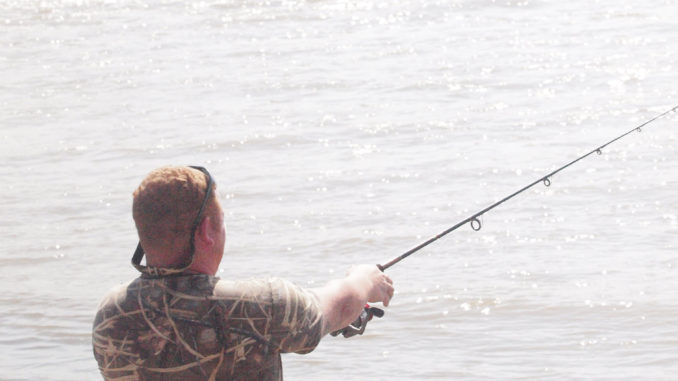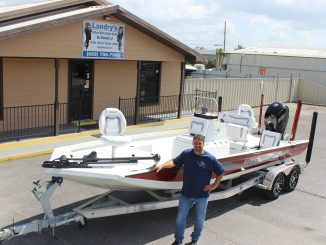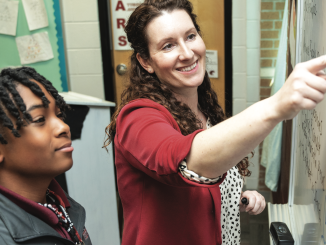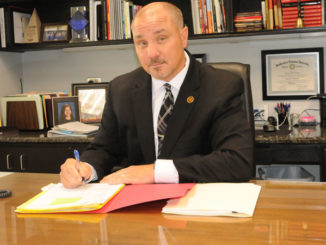
Nutrient-rich water provides boost to nearby wetlands, but wildlife could creep into Norco
The Bonnet Carre Spillway was opened for the tenth time in its 80-year history on Monday and the nutrient-rich Mississippi River water now flowing through the area will provide a boost to nearby wetlands, according to a local environmentalist.
Milton Cambre, of Norco, said the river nutrients will help cypress and vegetation growth in the spillway while also bringing freshwater to area swamps.
“They will probably leave the spillway open for four to six weeks and they are even talking about opening all 350 bays,” Cambre said. “That would mean a record level of water flowing through the spillway and I believe that the LaBranche Wetlands will really benefit from that.”
The Bonnet Carre Spillway is a flood control operation that allows floodwaters from the Mississippi River to flow into Lake Pontchartrain and then the Gulf of Mexico. The spillway was built after the Great Flood of 1927 that inundated much of the Mississippi River basin. With the Mississippi River now expected to crest at 19.5 feet in New Orleans on May 23, the Corps of Engineers have opened 110 of the spillway’s 350 bays.
More bays are expected to be opened as the need arises. When fully open, the spillway diverts 250,000 cubic feet of water per second away from downstream communities.
Cambre said that the opening comes at a good time because the spillway area has been extremely dry.
“Opening the spillway has always been a huge plus for us environmentally,” he said. “The only potential downsides are a possible algae bloom, which would be detrimental, and the relocation of some fish and crabs.
“But the crawfish are going to be super, and that’s always a positive.”
Spillway project manager Christ Brantley agrees that the opening will be a boon to the spillway ecosystem.
“Additional sediments and nutrients from the Mississippi River would help feed the ecosystem in the spillway,” Brantley said. “It would be a good year for crawfish if the water comes in at the right time and ponds would be replenished.
“It would jumpstart the whole ecosystem.”
The last time the spillway was opened was in 2008 from April 11 through May 8 when the river crested at 16.69 feet.
Residents could get up-close, personal look at wildlife
Many animals and reptiles, including deer, rabbits, hogs, rats, mink, coyotes, snakes and raccoons call the spillway home and will all be looking for a safe place to hide for the next month.
“The deer and smaller game will seek higher ground,” Scott Durham, deer program manager for the Louisiana Department of Wildlife and Fisheries, said. “The spillway is a bona fide wetland, so most of the wildlife in the area will be OK. They always seem to have a knowledge of what’s coming.”
Most wildlife will attempt to filter out through the habitat into forested land. And while there are some forested areas near the spillway, many people in Norco and Montz live in neighborhoods that border the area.
“The wildlife are going to do what they have to do to survive, even if that means going into someone’s yard,” Durham said.
And even though it’s probable that some of those animals drowned during the opening on Monday, the majority likely escaped in time.
“There is still a good amount of forested wetlands on both sides of the spillway, so I doubt that you had a huge mortality rate,” Durham said. “They are able to adapt quickly to any changes.”
All recreational activities, including hunting, have been suspended inside of the spillway until further notice.
Parish restricts levee path access due to rising river
With the Mississippi River expected to reach 16 feet in St. Charles Parish on Sunday, several restrictions have been put in place for the safety of residents.
As of now, driving on the river levees is prohibited. The parish is also asking that residents stop biking and walking on the levees, including on levee bike paths. There will also be no digging activity and/or subsurface work of any kind allowed within 1,500 feet of the levee centerline. This includes pile driving, excavation and trenching.
Inspection teams from the Army Corps of Engineers, Governor’s Office Homeland Security and Emergency Preparedness and levee districts are monitoring the levee system throughout the day, seven days a week.
In order to carry out the necessary assessments and operations, there will be “zero tolerance” for unauthorized parking and driving on the levees, according to parish officials.
The St. Charles Parish Emergency Operations Center issued a statement that says they are confident, and have been assured, that the levees in St. Charles Parish are able to withstand the projected water heights.
“The Emergency Operations Center has and will continue to communicate with state, federal and local agencies and our industrial partners concerning the rising levels of the river,” the release said. “The levee districts again ask that all residents refrain from using the levee for recreational purposes until further notice.”




Be the first to comment